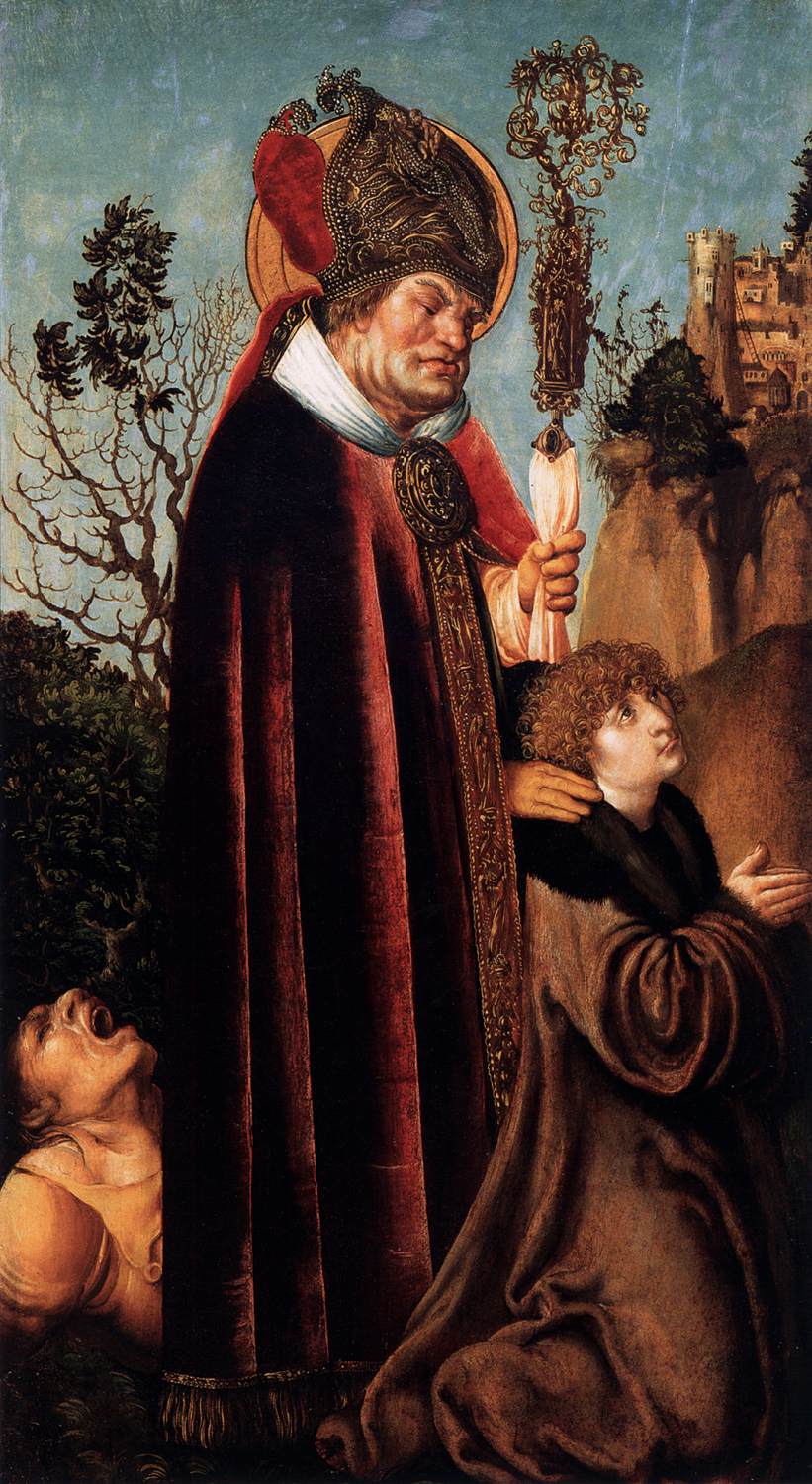Description
The painting St Valentine with a Donor by Lucas Cranach the Elder is a work of art that captures the viewer's attention for its distinctive artistic style and the interesting story behind it.
The composition of the painting is very interesting, as it presents a central figure of Saint Valentine, who is in a slightly inclined position, with one hand over his heart and the other holding a bouquet of flowers. At his side is a donor, who offers a coin to Valentine. The composition is balanced and symmetrical, with a dark background that brings out the bright colors of the central figure and the donor.
The artistic style of Lucas Cranach the Elder is characterized by the use of clear and defined lines, as well as the use of bright and saturated colours. In this work, the artist uses a vibrant color palette, including shades of red, green, and gold, to create a striking and eye-catching image.
The story behind the painting is equally fascinating. Saint Valentine is a Christian saint who is celebrated around the world as the patron saint of lovers. In this painting, Saint Valentine is depicted as a priest performing a marriage blessing for the donor and his wife. This scene is a reference to the legend of Saint Valentine, which tells that the saint secretly married couples in love at the time of the Roman Empire, when marriage was prohibited.
A little known aspect of this painting is that it is believed to have been commissioned by the Elector of Saxony as a gift to his wife. The work was created in the 16th century and has been the subject of numerous interpretations and analysis by art historians.
In conclusion, the painting St Valentine with a Donor by Lucas Cranach the Elder is an impressive work of art that stands out for its distinctive artistic style, balanced and symmetrical composition, vibrant color palette, and interesting history. This work is a sample of the talent and creativity of one of the most important artists of the German Renaissance.

